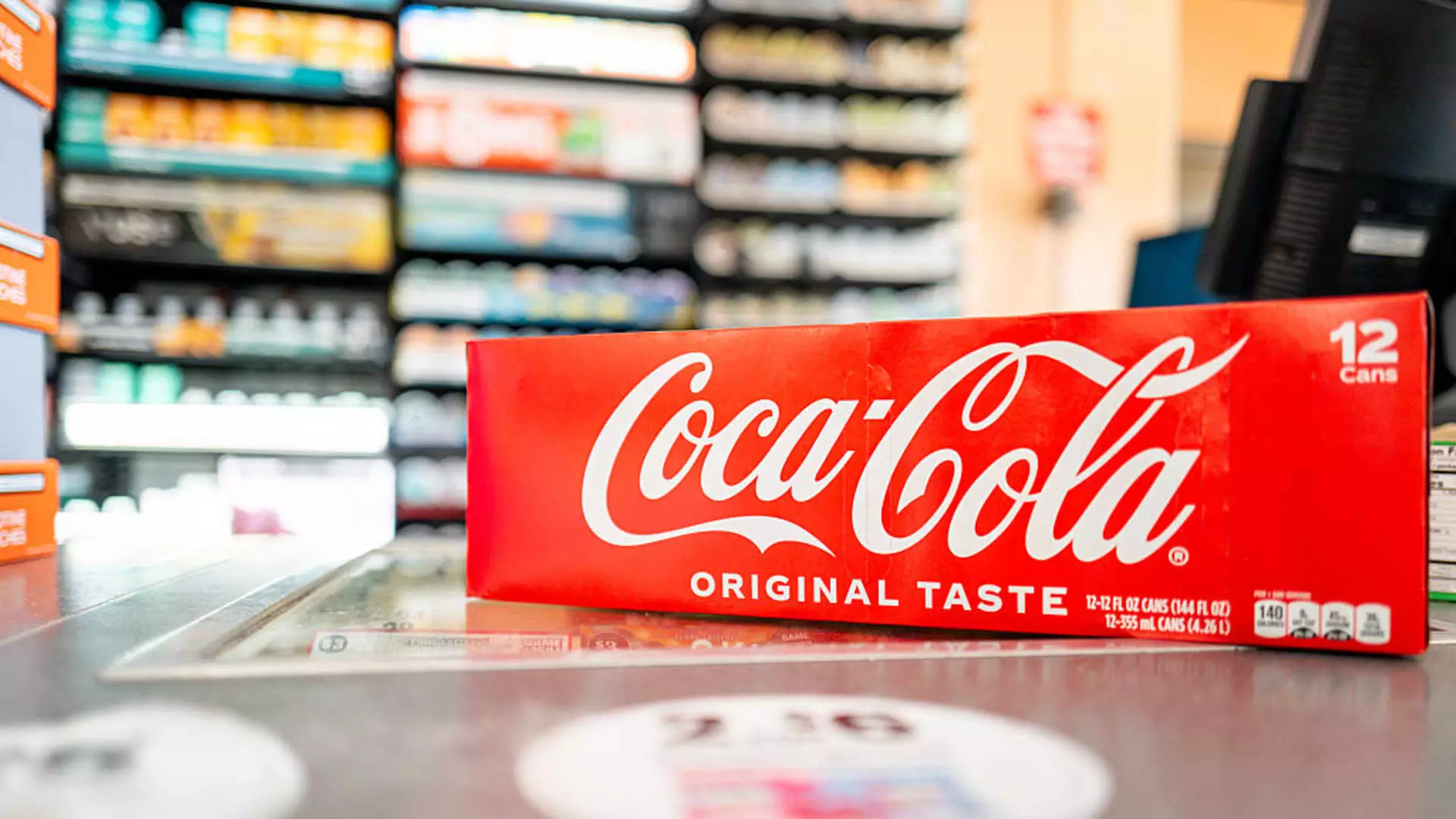Coca-Cola’s latest financial report presents a superficial picture of triumph, with earnings and revenues exceeding analyst expectations, yet this rosy façade conceals a troubling truth: the company faces significant headwinds that threaten its long-term stability. The half-hearted rally in share prices, which barely dipped less than 1%, hints at investor skepticism rather than confidence, a sentiment rooted in the company’s declining volume metrics and uneven global performance. While the headline numbers—quarterly revenue surpassing $12.6 billion and net income rising impressively—seem encouraging, they are inextricably linked to tactical pricing strategies rather than genuine consumer demand for the core product.
In truth, Coca-Cola’s growth continues to be a tale of surface-level resilience masking fundamental weaknesses. The 1% increase in organic revenue is notable but hardly spectacular when considering the broader context. Volume declines across most markets, particularly Latin America and Asia-Pacific, highlight a waning appeal in many of its traditional territories. The only bright spot appears to be the EMEA region, which experienced a modest 3% volume increase. However, this regional growth doesn’t tell a story of unwavering consumer loyalty but of various market dynamics and localized factors temporarily bolstering sales. Overall, the global unit case volume shrank by 1%, a clear indicator that the product remains unappealing to modern consumers in many parts of the world.
Economic and Social Headwinds Undermine Consumer Confidence
A nuanced examination reveals that external economic forces are wielding destructive influence over Coca-Cola’s performance. With economic uncertainty and geopolitical tensions weighing heavily on consumer confidence, the declining volumes are symptomatic of a broader sentiment shift—a sense of unease and reduced disposable income among everyday consumers. CEO James Quincey’s comments about “improving” markets are words of cautious optimism rather than faith in a flourishing consumer base. His acknowledgment that certain markets “improved sequentially” implies instability rather than sustainable growth.
Additionally, the company’s struggles in the United States and Latin America reflect an erosion of market share in core segments. The declining demand for carbonated soft drinks is well-documented—people, especially younger demographics, are moving away from sugary sodas in favor of healthier options. Coca-Cola’s attempt to diversify with water, coffee, and plant-based beverages has met mixed success, evidenced by the 4% decline in the juice and dairy division. The stagnation in the water and sports drinks segment underscores that Coca-Cola is losing relevance in the health-conscious niche of the market.
The social controversy involving social media rumors about Coca-Cola cooperating with immigration authorities did not help its brand image. Although the company denied these allegations, the damage was already done, resulting in a temporary sales dip among Hispanic consumers. This episode illustrates how fragile brand loyalty can be in an era dominated by social media’s power to influence consumer perceptions overnight.
Strategic Shifts or Shallow Gestures?
Coca-Cola’s announcement to launch a cane sugar version of its flagship soda in the U.S. appears to be a strategic attempt to appeal to nostalgic consumers and differentiate itself in a competitive market. However, such moves may be more superficial than transformative. It raises questions about whether the company is genuinely innovating or merely tinkering at the margins to curb dwindling volume.
Meanwhile, the company maintains its optimistic forecast for 2025, projecting a 5-6% increase in organic revenue, and a modest 3% growth in earnings per share for this year. Yet, given the persistent volume declines—despite rising prices—these forecasts seem overly optimistic, potentially driven more by hopes of a market turnaround than by tangible evidence of consumer revival. The reliance on price hikes to sustain revenue growth is a tactic prone to backfire if consumer sentiment continues to weaken.
Coca-Cola’s underlying challenge lies in balancing short-term revenue boosts with the need to adapt to shifting consumer tastes and societal expectations. Resting on legacy demand and strategic pricing is a dangerous game, especially when the core product’s appeal continues to decline. The company’s future depends on how effectively it navigates these complex headwinds—whether it can reinvent itself or remain captive to the declining habits of traditional soft drink consumers.


Leave a Reply